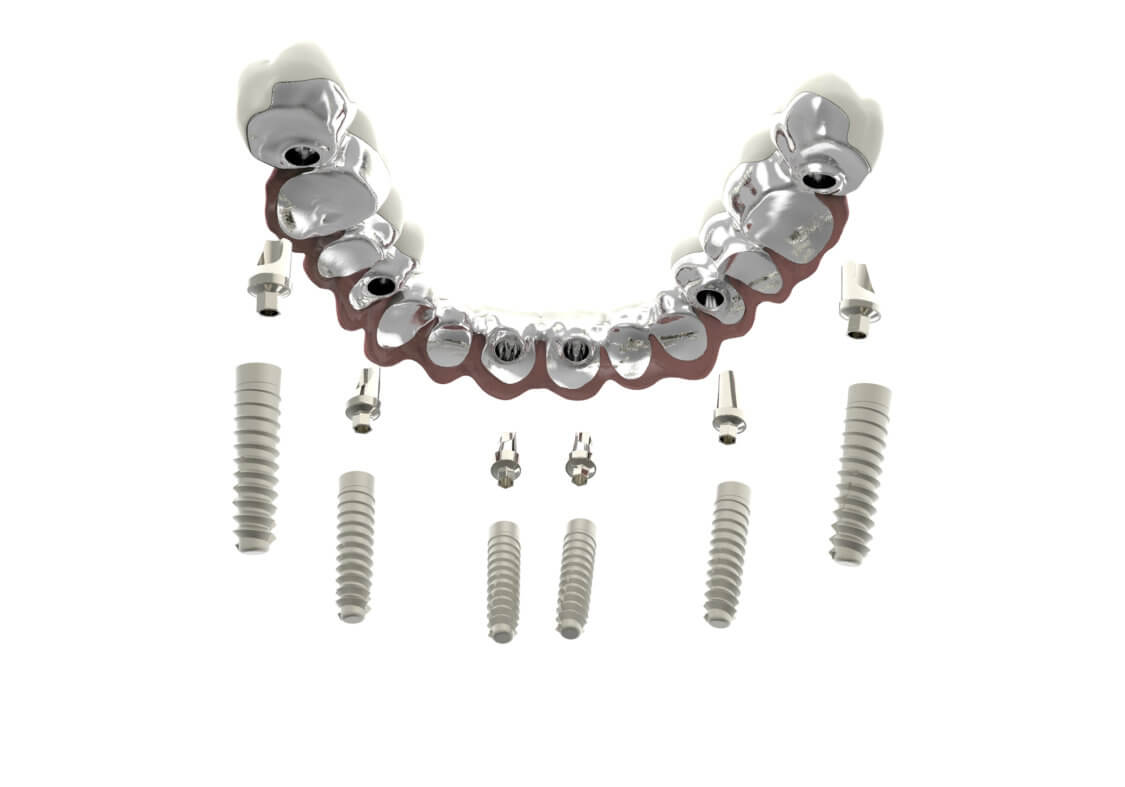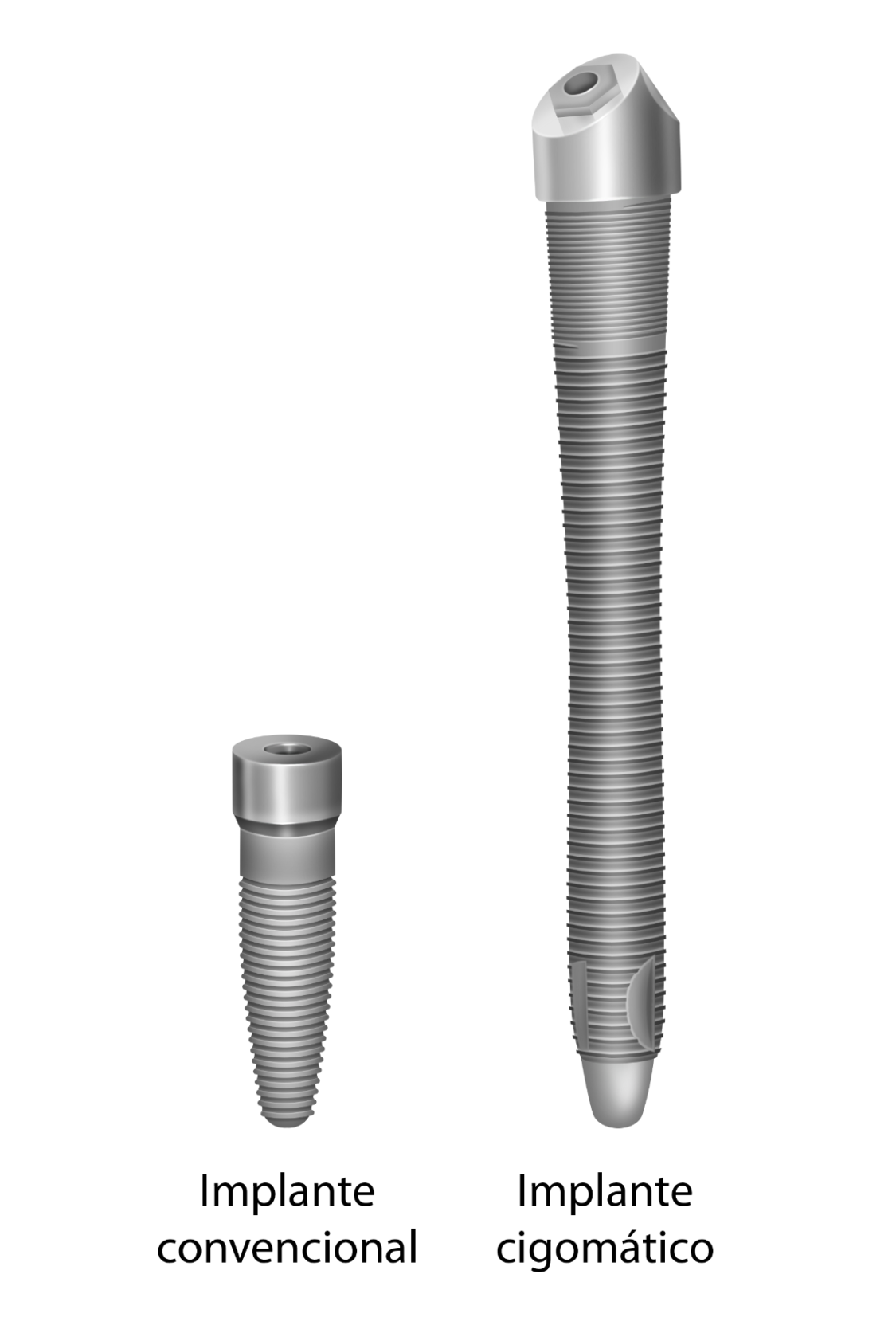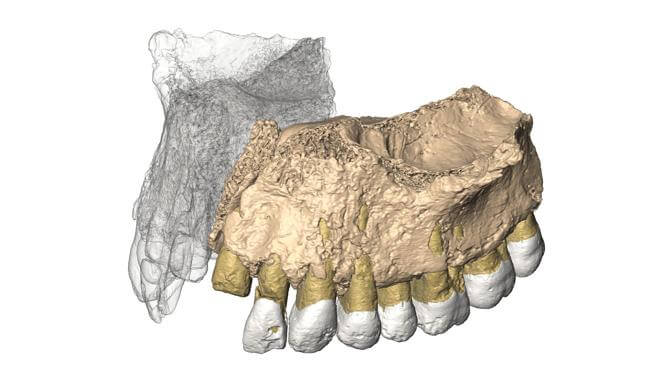Dental implants are components of titanium that act like the root of a tooth and that are placed by means of a surgery in the jaw bone, under the gum. The three key components of a dental implant are:
- Implant: titanium post that acts as a root for the crown.
- Abutment: the abutment is fixed to the implant and holds the crown in place.
- Crown: a ceramic tooth that attaches to the abutment and provides the appearance of a natural tooth.
After a short period of time, the implant fuses with the bone, providing a stable support for the artificial teeth that are placed on these implants.
Dental implants are also beneficial for general oral health, because unlike bridges, it is not necessary to attach them to another teeth, and they also stop the process of reabsorption of the maxillary bone that begins when a tooth is lost.












